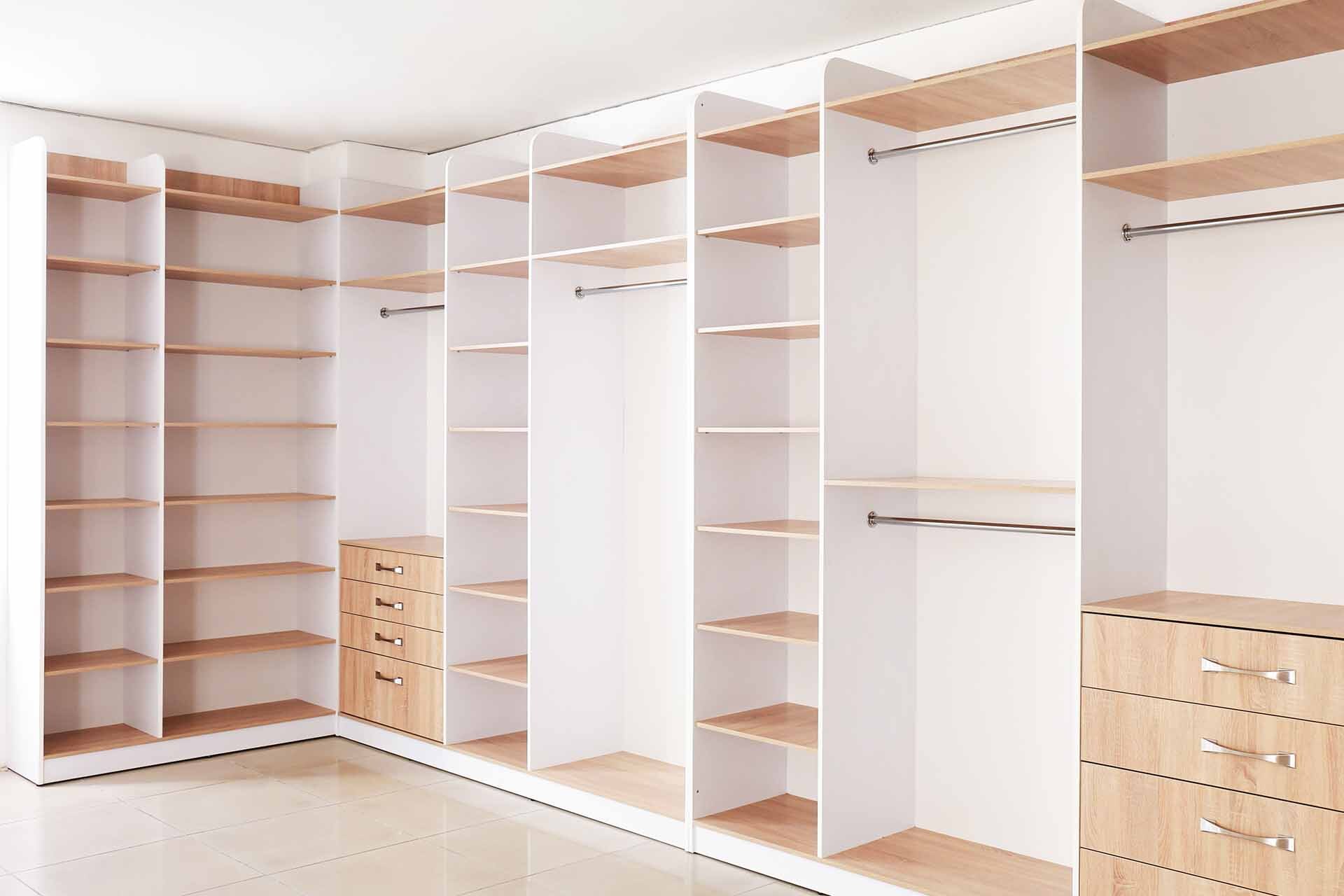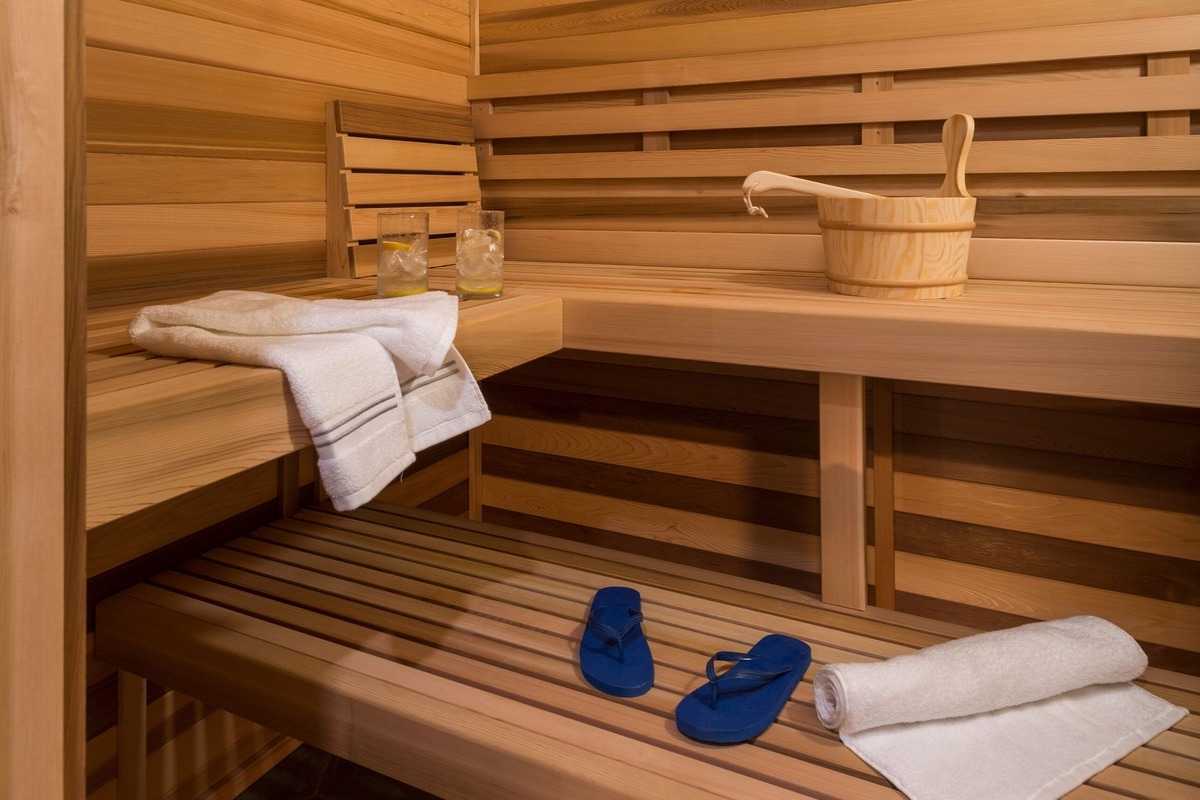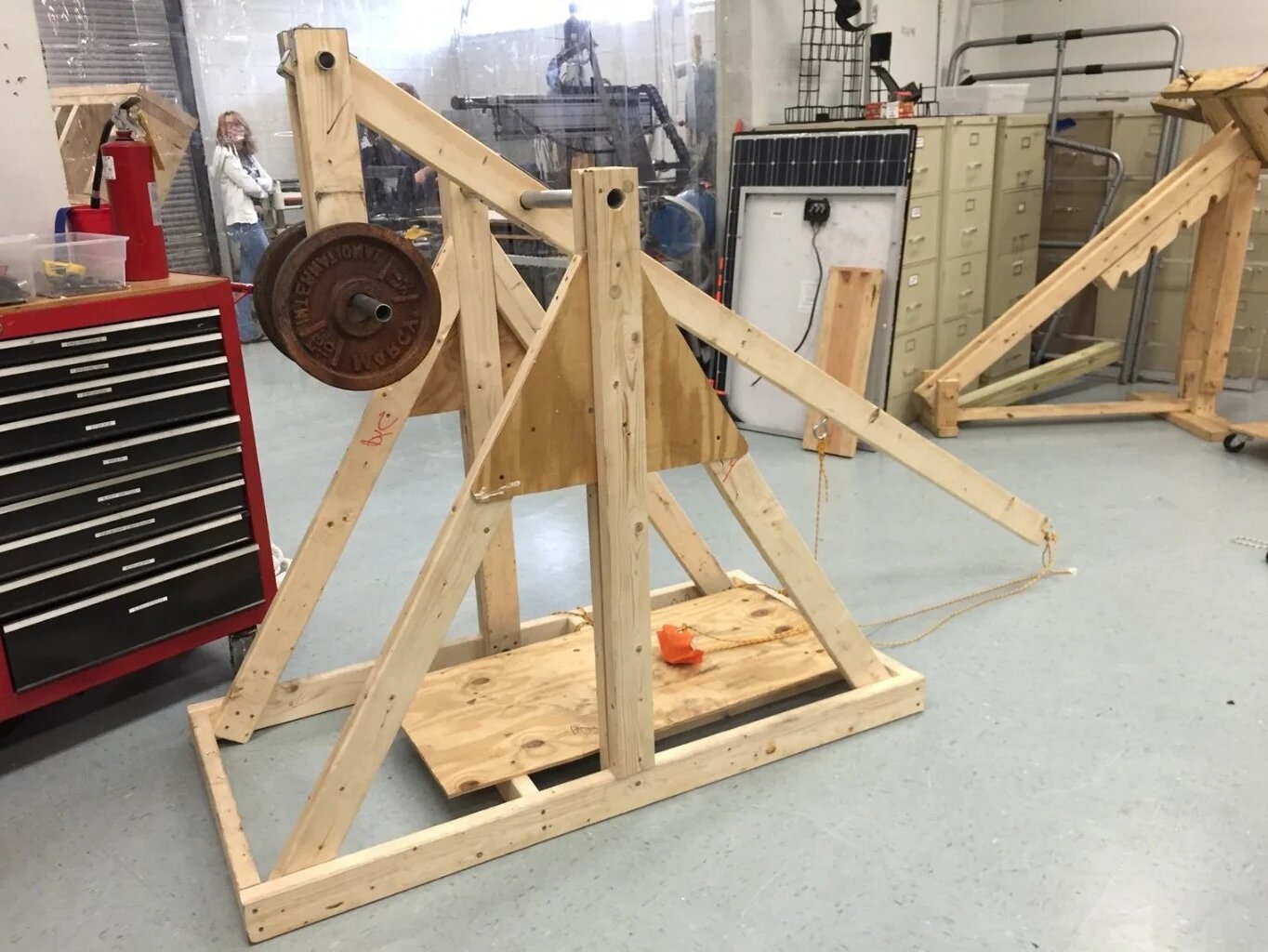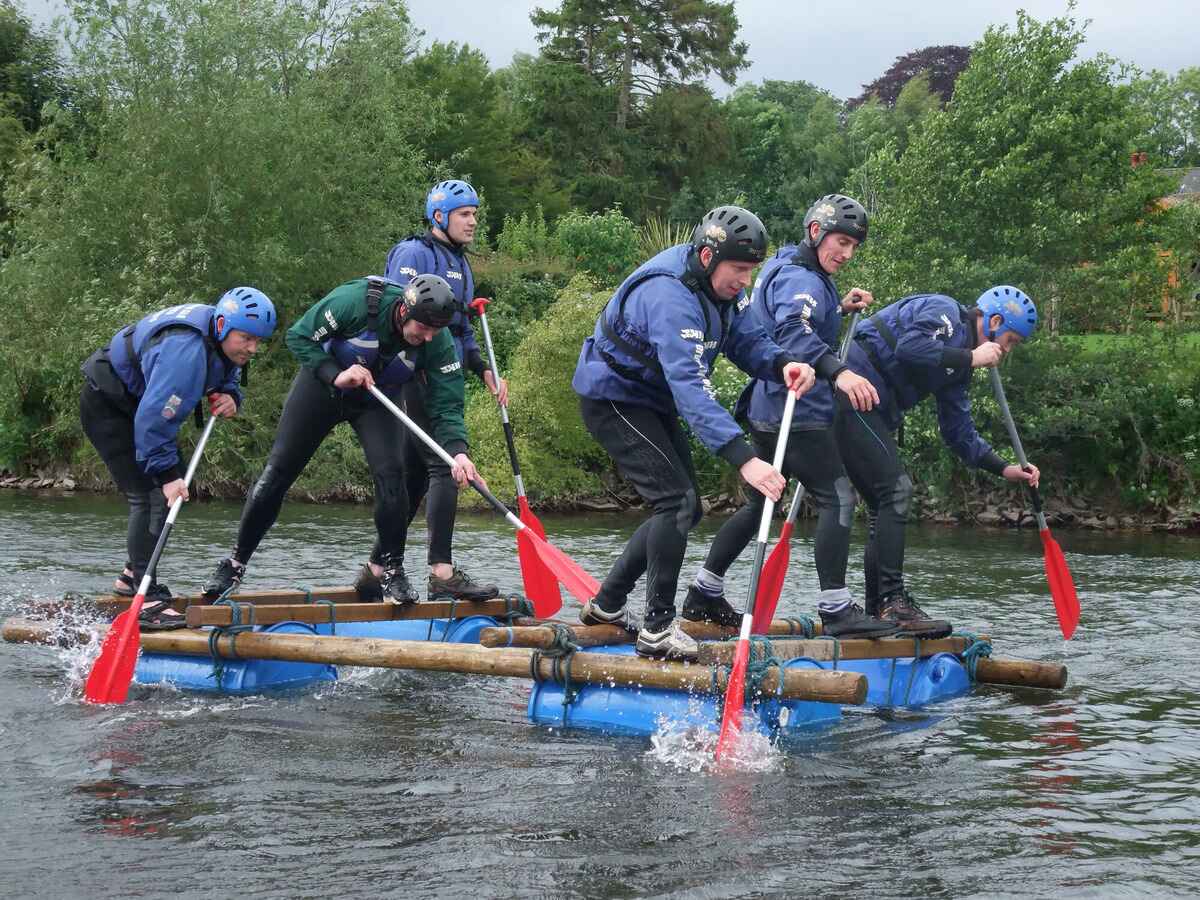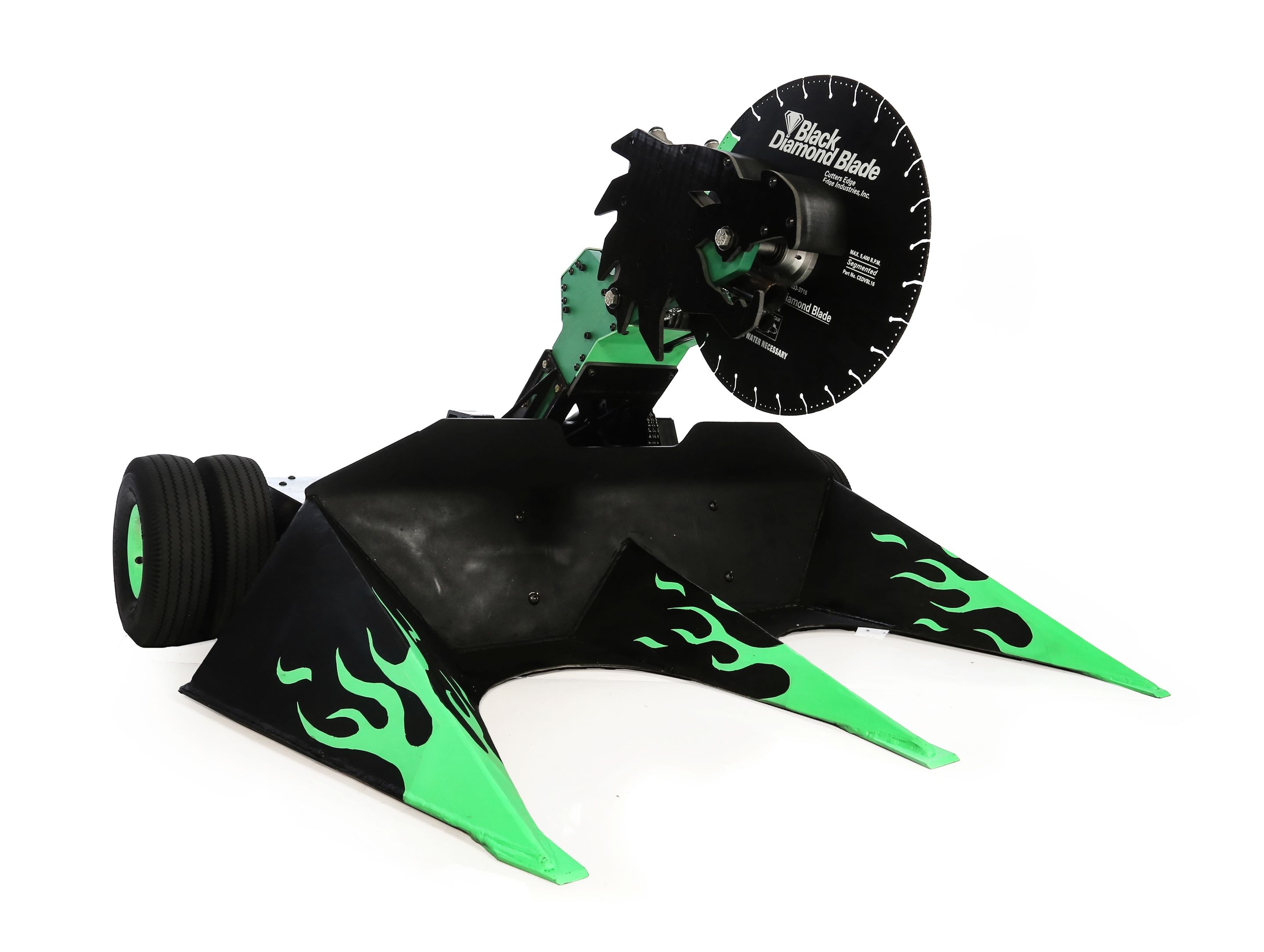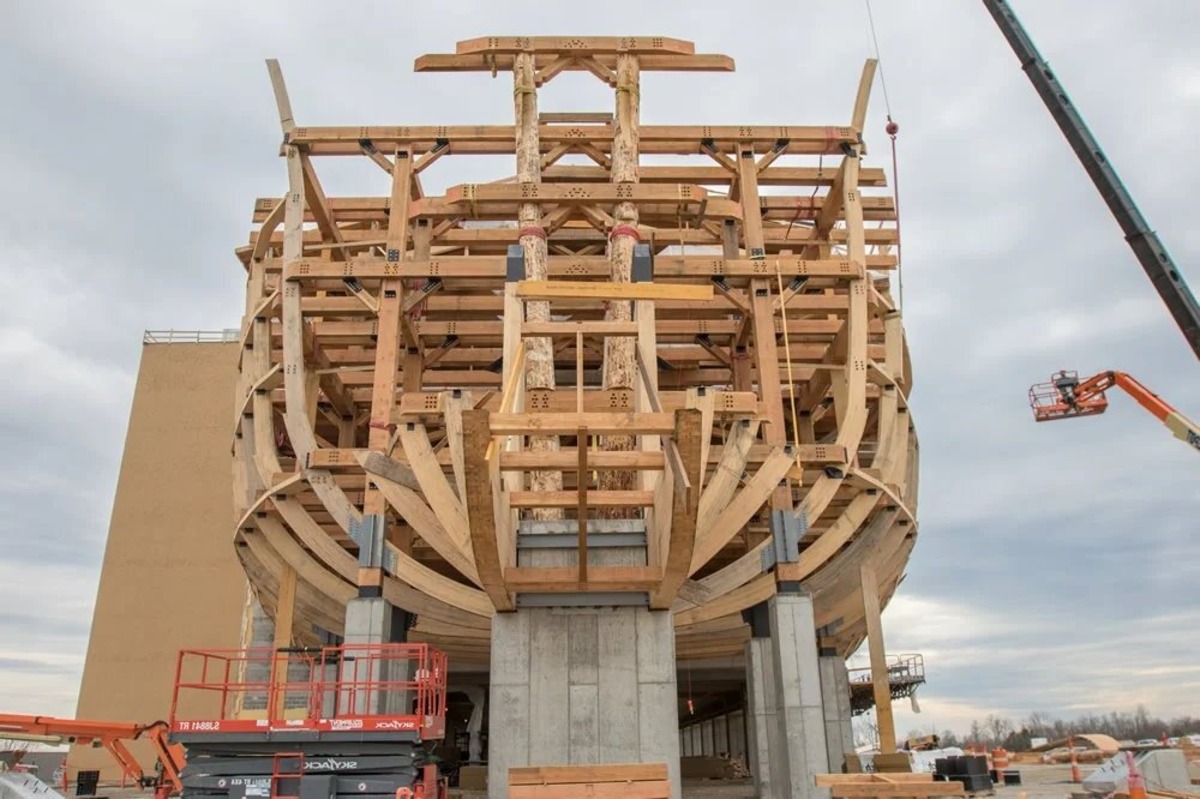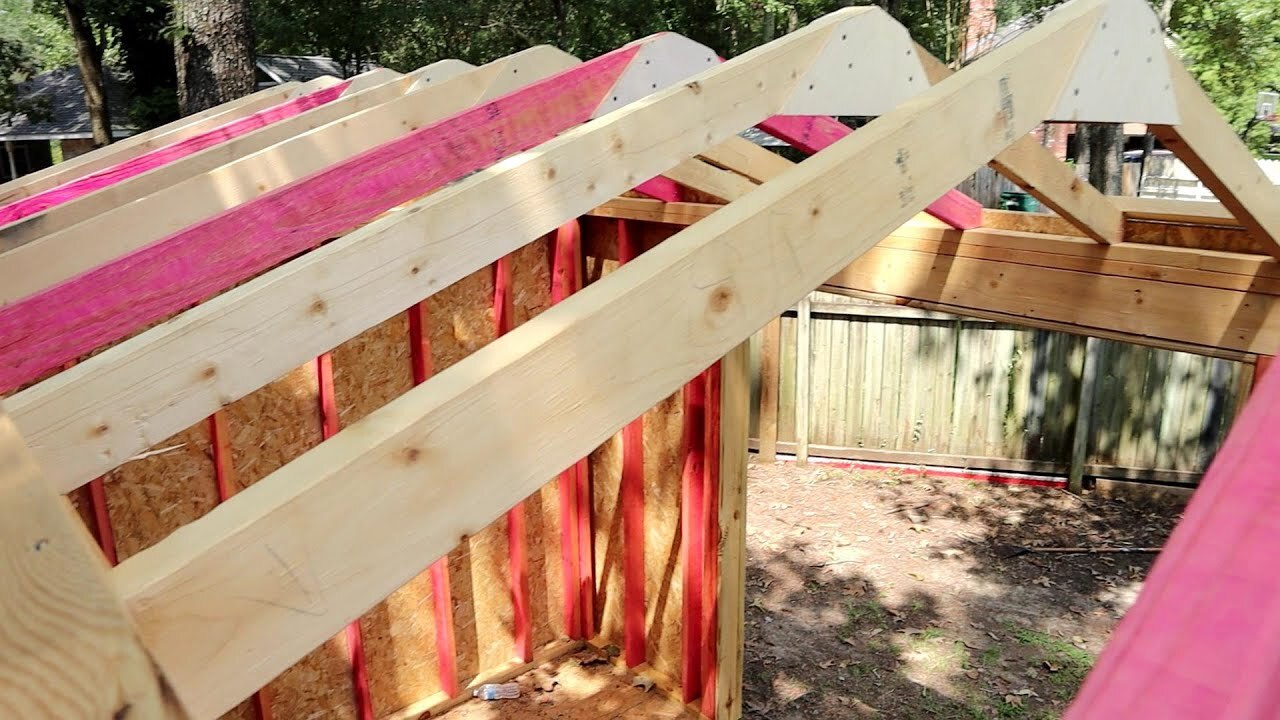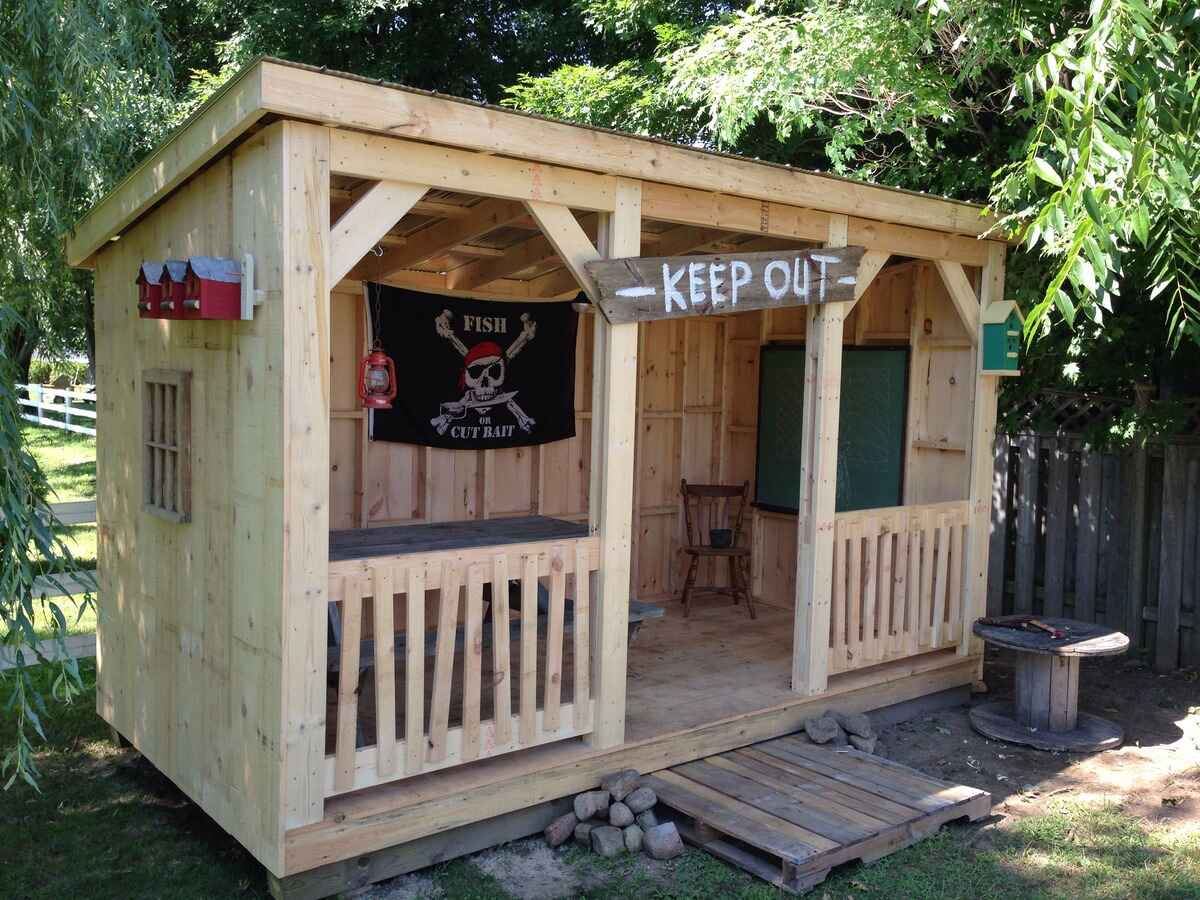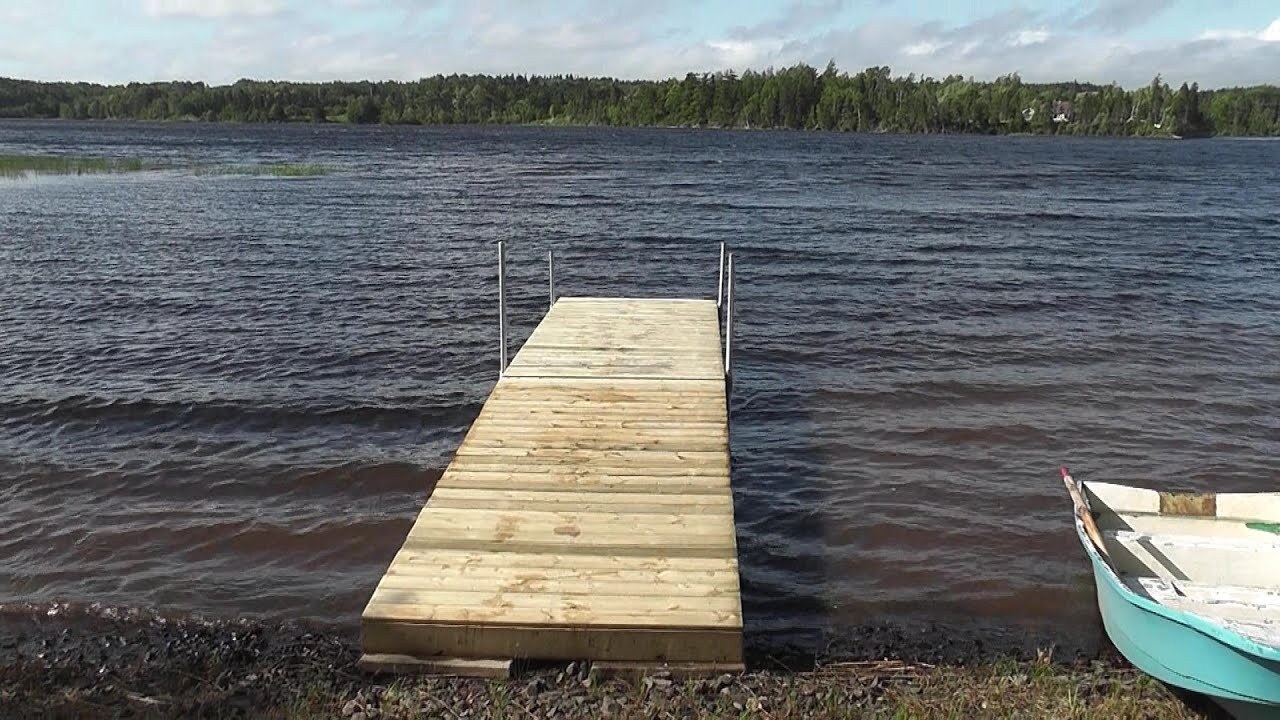Home>Outdoors & Camping>Landscaping>How To Build A Waterfall
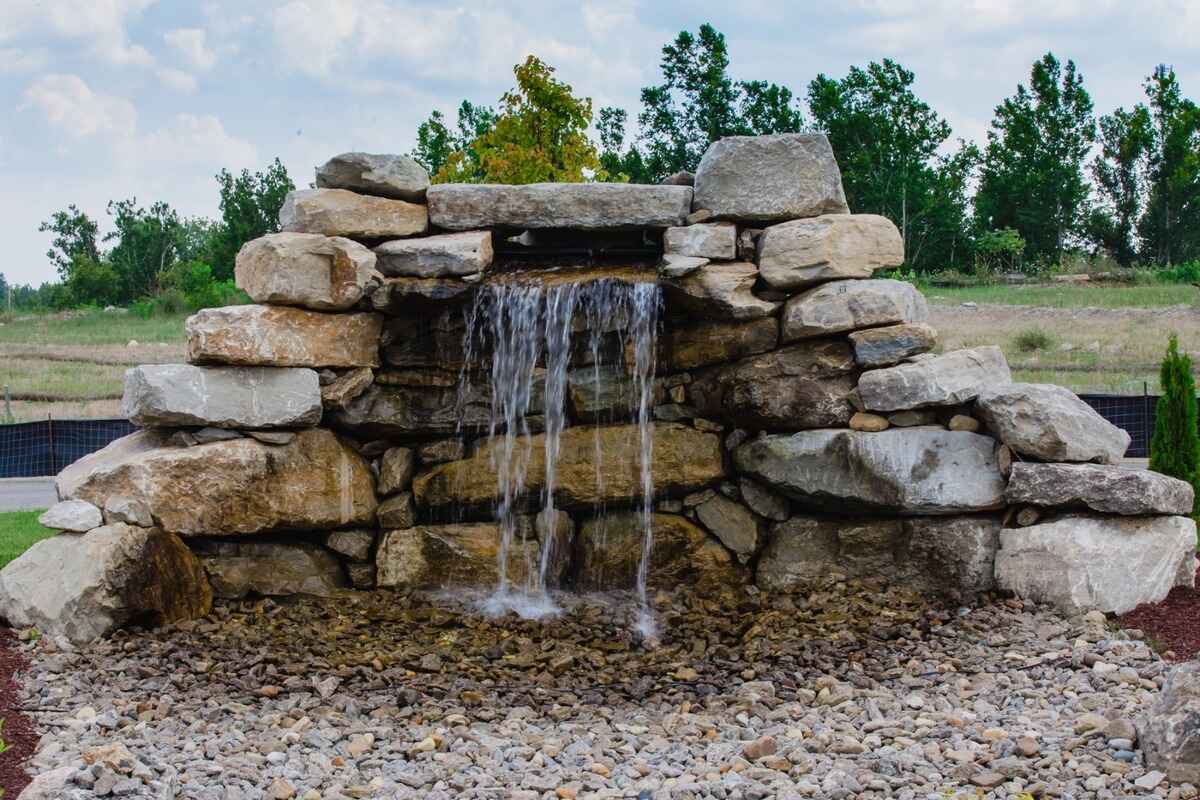

Landscaping
How To Build A Waterfall
Published: February 20, 2024

Content Creator for Outdoors & Camping, Sophie turns any yard into a sustainable paradise. Her dedication to DIY outdoor projects and volunteer work in community gardens shares joy and knowledge.
Learn how to enhance your landscaping with a stunning waterfall feature. Get expert tips and ideas for creating a beautiful outdoor oasis. Discover the secrets to building a captivating waterfall in your own backyard.
(Many of the links in this article redirect to a specific reviewed product. Your purchase of these products through affiliate links helps to generate commission for Twigandthistle.com, at no extra cost. Learn more)
Introduction
Welcome to the world of waterfalls! Adding a waterfall to your landscape can transform your outdoor space into a serene and captivating oasis. The sight and sound of cascading water can create a peaceful ambiance, making your garden a place of relaxation and rejuvenation. Whether you're a seasoned landscaping enthusiast or a novice looking to embark on a new project, building a waterfall can be a rewarding endeavor that brings nature's beauty right to your doorstep.
A well-designed waterfall not only enhances the visual appeal of your garden but also introduces a soothing auditory element. The gentle gurgle of water as it flows over rocks can drown out unwanted noise, providing a tranquil environment for unwinding after a long day. Additionally, the presence of a waterfall can attract local wildlife, such as birds and butterflies, adding an extra touch of natural charm to your outdoor space.
In this comprehensive guide, we will walk you through the step-by-step process of creating your own stunning waterfall. From the initial planning and design stages to the installation of the water feature and beyond, you will gain valuable insights into the art of crafting a captivating water feature. Whether you envision a small, meandering stream or a grand, multi-tiered cascade, this guide will equip you with the knowledge and inspiration needed to bring your vision to life.
As we delve into the intricacies of building a waterfall, you will discover the importance of careful planning, thoughtful design, and the selection of suitable materials. We will explore the significance of choosing the right location for your waterfall, as well as the essential tools and supplies required for the construction process. Additionally, we will delve into the techniques for creating a sturdy foundation, constructing the waterfall structure, and incorporating natural elements such as rocks and plants to achieve a harmonious blend with the surrounding landscape.
Furthermore, we will guide you through the installation of the pump and water feature, crucial components that bring your waterfall to life with the soothing sound of flowing water. Finally, we will discuss the finishing touches that elevate your waterfall from a mere feature to a captivating focal point in your garden.
So, whether you're seeking a peaceful retreat in your backyard or aiming to elevate the aesthetic appeal of your outdoor space, join us on this journey as we explore the art of building a breathtaking waterfall. Get ready to unleash your creativity and immerse yourself in the enchanting world of water and nature. Let's embark on this exciting adventure together!
Read more: How To Build A Koi Pond With Waterfall
Planning and Designing Your Waterfall
The initial phase of building a waterfall is perhaps the most crucial, as it sets the foundation for the entire project. Planning and designing your waterfall involves a blend of creativity, practicality, and a deep understanding of your landscape. Before breaking ground, take the time to envision the type of waterfall that best complements your outdoor space. Consider the size, shape, and overall aesthetic you wish to achieve, keeping in mind the existing features of your garden.
Start by sketching out your ideas on paper or using digital design tools. Visualizing the layout of the waterfall, including its placement, flow, and surrounding elements, can provide valuable insights into the project's feasibility and potential impact on your landscape. Take into account the natural topography of your garden, as well as any existing water sources or features that can be incorporated into the design.
As you delve into the planning phase, consider the practical aspects of building a waterfall. Assess the water source for your waterfall, whether it's a natural spring, a recirculating pump, or a connection to your existing water supply. Understanding the water source will influence the scale and design of your waterfall, ensuring a sustainable and efficient water flow.
Furthermore, consider the environmental factors that may impact your waterfall, such as sunlight exposure, soil composition, and drainage patterns. These elements can influence the selection of suitable plants, rocks, and construction materials, as well as the overall maintenance requirements of your waterfall.
Incorporating natural elements into your design is essential for creating a harmonious and visually appealing waterfall. Consider the placement of rocks, boulders, and pebbles to mimic the organic flow of water in nature. Additionally, think about integrating aquatic plants, such as water lilies and ferns, to enhance the natural beauty of your waterfall and provide habitat for local wildlife.
Finally, seek inspiration from existing water features in nature, such as rivers, streams, and waterfalls in natural landscapes. Observing the way water interacts with the environment can offer valuable insights into creating a captivating and authentic waterfall in your own garden.
By meticulously planning and designing your waterfall, you lay the groundwork for a project that seamlessly integrates with your landscape, enhances the visual appeal of your garden, and provides a tranquil retreat for relaxation and contemplation. Embrace the creative process, explore various design possibilities, and let your imagination flow freely as you embark on this transformative journey of building a stunning waterfall.
Choosing the Right Location
Selecting the ideal location for your waterfall is a pivotal decision that significantly influences its visual impact and overall functionality. The right location sets the stage for a harmonious integration of the waterfall into your landscape, ensuring that it becomes a captivating focal point. When choosing the location, consider the following factors:
-
Natural Flow: Assess the natural flow of your landscape to identify potential areas where a waterfall would naturally fit. Look for slopes, elevation changes, or existing water features that can be leveraged to create a seamless transition for the waterfall. A natural-looking placement enhances the aesthetic appeal and ensures that the waterfall complements the surrounding environment.
-
Visibility and Auditory Experience: Determine the visibility of the chosen location from key vantage points in your garden. The waterfall should be strategically positioned to maximize its visual impact and create a captivating focal point. Additionally, consider the auditory experience – a well-placed waterfall can provide a soothing sound that permeates the outdoor space, enhancing the overall ambiance.
-
Sunlight Exposure: Evaluate the sunlight exposure in the chosen location, as it directly impacts the growth of aquatic plants and the overall ecosystem of the waterfall. While some plants thrive in direct sunlight, others prefer shaded areas. Understanding the sunlight patterns will guide the selection of suitable flora and ensure the long-term health of your waterfall.
-
Accessibility and Safety: Consider the accessibility of the chosen location for maintenance and viewing purposes. Ensure that the area is easily reachable for routine upkeep, such as cleaning and plant care. Additionally, prioritize safety by avoiding locations that pose potential hazards, especially if you have children or pets in your household.
-
Integration with Surrounding Landscape: Aim for seamless integration of the waterfall with the surrounding landscape. The location should allow for the incorporation of natural elements, such as rocks, plants, and existing water features, to create a cohesive and visually appealing composition. A well-integrated waterfall becomes an organic extension of the natural environment, enhancing the overall beauty of your garden.
By carefully considering these factors, you can identify the perfect location for your waterfall, ensuring that it becomes a captivating and harmonious addition to your outdoor space. The right location sets the stage for a visually stunning and functionally efficient waterfall that enriches your landscape and provides a tranquil retreat for relaxation and contemplation.
Gathering Materials and Tools
Before embarking on the construction of your waterfall, it is essential to gather the necessary materials and tools to ensure a smooth and efficient building process. From sturdy construction materials to specialized equipment, having the right supplies at your disposal is crucial for bringing your waterfall vision to life.
Materials
-
Rocks and Boulders: Select a variety of rocks and boulders in different shapes, sizes, and textures to create a natural-looking waterfall. Choose durable, weather-resistant stones that can withstand the constant flow of water and provide a visually appealing aesthetic.
-
Pond Liner: Invest in a high-quality pond liner to create a watertight reservoir for your waterfall. The liner serves as a barrier to prevent water from seeping into the surrounding soil, ensuring efficient water circulation within the waterfall structure.
-
Aquatic Plants: Consider incorporating aquatic plants such as water lilies, cattails, and irises to enhance the ecological balance of your waterfall. These plants not only add a touch of natural beauty but also contribute to the overall health of the ecosystem.
-
Pump and Tubing: Select a reliable water pump capable of circulating water through the waterfall. Choose tubing that is durable and suitable for outdoor use, ensuring a consistent and efficient water flow.
-
Construction Materials: Depending on the design of your waterfall, gather additional construction materials such as concrete, mortar, and waterproof sealant to build a sturdy foundation and secure the rocks in place.
Read more: How To Build A Pond Waterfall
Tools
-
Shovel and Spade: Essential for excavating the area and shaping the terrain to accommodate the waterfall structure.
-
Level and Measuring Tape: Ensure precision and accuracy during the construction process by using a level to check the alignment of rocks and a measuring tape to determine dimensions.
-
Rubber Mallet: Useful for adjusting the position of rocks and boulders without causing damage during the assembly of the waterfall.
-
Utility Knife: Ideal for cutting and shaping the pond liner to fit the contours of the waterfall structure.
-
Work Gloves and Safety Gear: Prioritize safety by wearing work gloves, protective eyewear, and appropriate footwear to prevent injuries during construction.
By gathering the necessary materials and tools, you set the stage for a successful waterfall construction project. With careful planning and preparation, you can ensure that the building process proceeds smoothly, allowing you to focus on bringing your waterfall vision to fruition.
Building the Foundation
The foundation of a waterfall serves as the backbone of its structural integrity, providing stability and support for the entire water feature. Building a solid foundation is essential for ensuring the longevity and functionality of the waterfall, as it forms the base upon which the cascading water and natural elements will be integrated.
To begin the process of building the foundation, start by excavating the designated area to create a level and stable base for the waterfall structure. Use a shovel and spade to remove any debris, rocks, or vegetation, ensuring that the ground is clear and ready for construction. Pay close attention to the contours of the terrain, as the foundation should be seamlessly integrated into the natural landscape to achieve a cohesive and authentic look.
Once the area is cleared, proceed to compact the soil to create a firm and level surface. This can be achieved by using a tamper or compactor to ensure that the ground is adequately prepared to support the weight of the waterfall components. A well-compacted foundation minimizes the risk of shifting or settling over time, providing a reliable base for the subsequent construction phases.
Next, it's time to install the pond liner, which serves as a crucial component of the foundation. Carefully lay the pond liner over the compacted soil, ensuring that it extends beyond the perimeter of the waterfall structure to create a watertight reservoir. The pond liner acts as a barrier, preventing water from seeping into the surrounding soil and facilitating efficient water circulation within the waterfall.
As the pond liner is positioned, take care to smooth out any wrinkles or folds to ensure a snug and secure fit. Trim any excess liner using a utility knife, paying attention to the contours and curves of the waterfall structure. A properly installed pond liner forms the basis for a sustainable and functional water feature, providing a reliable containment system for the flowing water.
Finally, consider reinforcing the foundation with additional construction materials, such as concrete, mortar, or waterproof sealant, to further enhance its durability and resilience. These materials can be used to secure the edges of the pond liner, anchor rocks and boulders, and create a solid framework for the waterfall structure.
By meticulously building a strong and well-engineered foundation, you lay the groundwork for a visually stunning and enduring waterfall. The foundation not only provides structural support but also ensures the efficient circulation and containment of water, setting the stage for the next phases of constructing a captivating water feature.
Creating the Waterfall Structure
With the foundation in place, the focus shifts to the creation of the waterfall structure, a pivotal phase that brings the visual and auditory elements of the water feature to life. The waterfall structure encompasses the arrangement of rocks, the formation of cascading tiers, and the integration of natural elements to achieve a captivating and authentic representation of flowing water in nature.
Begin by strategically placing rocks and boulders to form the framework of the waterfall. Consider the natural flow of water and aim to mimic the organic patterns found in natural watercourses. Vary the sizes and shapes of the rocks to create a visually appealing and dynamic composition, ensuring that the placement appears both natural and deliberate. As you assemble the rocks, pay attention to the interplay of light and shadow, as well as the trajectory of the water flow, to achieve a harmonious and captivating visual effect.
To create the cascading tiers of the waterfall, carefully stack the rocks to form gradual descents that emulate the gentle movement of water. The tiered structure not only enhances the aesthetic appeal of the waterfall but also contributes to the soothing sound of flowing water. Each tier should seamlessly transition into the next, creating a continuous and rhythmic flow that captivates the senses and evokes a sense of tranquility.
As the waterfall structure takes shape, consider incorporating natural elements such as moss, ferns, and other vegetation to soften the rugged appearance of the rocks and infuse the waterfall with a touch of organic beauty. These plants not only add visual interest but also contribute to the ecological balance of the waterfall, creating a habitat for beneficial microorganisms and small wildlife.
Throughout the construction of the waterfall structure, maintain a keen eye for detail and strive for a balance between artistry and authenticity. Embrace the creative process, experiment with different rock arrangements, and allow the natural contours of the landscape to guide the formation of the waterfall. By infusing the structure with a sense of natural fluidity and grace, you can create a captivating and immersive water feature that becomes the centerpiece of your outdoor sanctuary.
As the waterfall structure nears completion, step back and admire the transformation taking place in your garden. The carefully crafted tiers, the interplay of light and water, and the integration of natural elements converge to form a mesmerizing and enchanting waterfall that beckons with its timeless allure. With the structure in place, the stage is set for the next steps in the construction process, bringing you one step closer to realizing your vision of a breathtaking and harmonious waterfall.
Adding Rocks and Plants
The process of adding rocks and plants to your waterfall is a pivotal stage that infuses natural beauty and authenticity into the water feature. It involves the strategic placement of rocks and the thoughtful integration of aquatic plants to create a visually captivating and ecologically balanced environment.
When adding rocks to your waterfall, consider the diverse shapes, sizes, and textures available in nature. Selecting a variety of rocks and boulders allows for the creation of a dynamic and visually appealing composition. Larger rocks can serve as anchor points and foundational elements, while smaller stones and pebbles can be used to fill gaps and create naturalistic textures. The placement of rocks should emulate the organic flow of water, with careful attention to the interplay of light and shadow to enhance the visual impact.
Incorporating aquatic plants into the waterfall ecosystem adds a touch of natural beauty and contributes to the overall ecological balance. Consider introducing water lilies, cattails, irises, and other aquatic flora to enhance the visual appeal and provide habitat for beneficial microorganisms and small wildlife. The strategic placement of plants softens the rugged appearance of the rocks, creating a harmonious blend of textures and colors that enriches the waterfall environment.
As you add rocks and plants to your waterfall, strive for a seamless integration of natural elements. Emulate the meandering patterns found in natural watercourses, allowing the rocks to guide the flow of water in a visually captivating manner. Consider the placement of plants to create pockets of greenery that complement the rugged beauty of the rocks, fostering a sense of balance and harmony within the waterfall structure.
The addition of rocks and plants transforms the waterfall into a living, breathing ecosystem that captivates the senses and provides a sanctuary for local wildlife. The interplay of water, rocks, and plants creates a captivating tableau that invites contemplation and evokes a sense of tranquility. By carefully curating the arrangement of rocks and the selection of aquatic plants, you can create a visually stunning and ecologically vibrant waterfall that becomes the centerpiece of your outdoor oasis.
Incorporating rocks and plants into your waterfall is a testament to the artistry and creativity inherent in landscaping, allowing you to craft a natural masterpiece that seamlessly integrates with the surrounding environment. As the rocks and plants become integral components of the waterfall, they contribute to the creation of a captivating and immersive outdoor sanctuary, inviting you to revel in the timeless allure of nature's beauty.
Read more: How To Build A Small Waterfall With Rocks
Installing the Pump and Water Feature
The installation of the pump and water feature marks a pivotal phase in the construction of your waterfall, bringing the captivating sight and soothing sound of flowing water to life. The pump serves as the heart of the waterfall, facilitating the continuous circulation of water and creating the mesmerizing cascade that defines the water feature.
Begin by selecting a high-quality water pump that is suitable for the size and flow requirements of your waterfall. Consider factors such as the water volume, head height, and desired flow rate to ensure that the pump is capable of delivering the desired visual and auditory impact. Position the pump at the base of the waterfall structure, ensuring that it is securely anchored and easily accessible for maintenance.
Next, carefully connect the pump to the water supply, whether it's a dedicated reservoir, a recirculating system, or a connection to your existing water source. Ensure that the tubing and fittings are securely attached, creating a watertight seal to prevent leaks and maintain efficient water circulation. Test the pump to verify that it is functioning as intended, adjusting the flow rate and positioning as needed to achieve the desired waterfall effect.
As the pump is operational, the water feature begins to take shape, with the gentle flow of water cascading over the rocks and creating a captivating visual display. The sound of flowing water permeates the outdoor space, enveloping the surroundings in a tranquil ambiance that invites relaxation and contemplation.
Incorporate additional water features, such as cascading spillways, bubbling fountains, or misting jets, to enhance the visual and auditory appeal of the waterfall. These elements add depth and dynamism to the water feature, creating a multi-sensory experience that captivates the senses and elevates the overall ambiance of your outdoor sanctuary.
As the pump and water feature are seamlessly integrated into the waterfall structure, step back and admire the transformation taking place in your garden. The captivating sight and soothing sound of flowing water infuse the outdoor space with a sense of natural beauty and tranquility, creating a serene retreat that beckons with its timeless allure.
With the pump and water feature in place, the stage is set for the final touches that elevate your waterfall from a mere feature to a captivating focal point in your garden. The installation of the pump and water feature represents a significant milestone in the construction process, bringing you one step closer to realizing your vision of a breathtaking and harmonious waterfall.
Adding the Finishing Touches
With the foundational elements and water feature in place, adding the finishing touches to your waterfall is the transformative phase that elevates it from a construction project to a captivating focal point in your garden. This stage involves the meticulous attention to detail and the thoughtful integration of elements that enhance the visual appeal, functionality, and overall ambiance of the water feature.
One of the key finishing touches is the incorporation of lighting elements that accentuate the beauty of the waterfall, especially during the evening hours. Strategically placed LED lights can illuminate the cascading water, creating a mesmerizing display that extends the enjoyment of the waterfall into the night. The play of light and shadow enhances the visual impact, casting a magical glow over the rocks and plants, and infusing the outdoor space with an enchanting ambiance.
Consider the addition of natural accents, such as driftwood, river stones, or decorative pebbles, to complement the rugged beauty of the waterfall. These elements can be strategically placed to create points of interest and add a touch of rustic charm to the water feature. Additionally, incorporating seating areas or contemplative spaces near the waterfall allows for immersive experiences, inviting you and your guests to relax and immerse yourselves in the soothing sights and sounds of nature.
To further enhance the ecological balance of the waterfall, consider introducing beneficial bacteria and enzymes that promote water clarity and maintain a healthy aquatic ecosystem. These natural additives contribute to the overall health of the water feature, ensuring that it remains vibrant and sustainable over time.
Finally, take the time to fine-tune the landscaping around the waterfall, integrating native plants, shrubs, and ground cover to create a seamless transition between the water feature and the surrounding garden. Thoughtful landscaping enhances the overall cohesiveness of the outdoor space, creating a harmonious and visually captivating environment.
As the finishing touches are meticulously integrated into the waterfall, the transformation is complete, and the water feature emerges as a captivating centerpiece in your garden. The interplay of light, water, and natural elements creates an immersive and enchanting sanctuary that invites contemplation and relaxation, providing a timeless connection to the beauty of nature.
Incorporating the finishing touches is the crowning achievement of the waterfall construction process, marking the culmination of your vision and creativity. As you revel in the captivating allure of the completed waterfall, you are rewarded with a tranquil retreat that celebrates the harmony between human artistry and the timeless elegance of the natural world.
Maintaining Your Waterfall
Maintaining your waterfall is essential for preserving its beauty, functionality, and ecological balance over time. Regular upkeep ensures that the water feature remains vibrant and sustainable, providing a captivating focal point in your garden for years to come.
Cleaning and Debris Removal
Periodically clean the waterfall structure and surrounding area to remove debris, algae, and sediment buildup. Use a soft brush or a pressure washer to gently scrub the rocks and surfaces, taking care not to disturb the natural arrangement. Clear any fallen leaves, twigs, or other organic matter from the water feature to prevent clogging and maintain optimal water flow.
Pond and Water Quality
Monitor the water quality of the reservoir and ensure that it remains clear and balanced. Regularly test the water for pH levels, ammonia, and nitrate concentrations, and adjust as needed to create a healthy aquatic environment. Consider the use of natural additives, such as beneficial bacteria and enzymes, to promote water clarity and maintain a thriving ecosystem within the waterfall.
Plant Care
Attend to the maintenance of aquatic plants by trimming overgrowth, removing decaying foliage, and fertilizing as necessary. Prune and shape the vegetation to maintain a balanced and visually appealing composition, ensuring that the plants contribute to the overall ecological balance of the waterfall.
Pump and Equipment Inspection
Regularly inspect the water pump, tubing, and fittings to ensure proper functionality and address any signs of wear or damage. Clean the pump intake to prevent debris accumulation and maintain efficient water circulation. Check for leaks, unusual noises, or fluctuations in water flow, and promptly address any issues to prevent potential damage to the pump and water feature.
Seasonal Considerations
Adapt your maintenance routine to account for seasonal changes and environmental factors. In colder climates, prepare the waterfall for winter by draining and storing the pump, protecting the water feature from freezing, and adjusting the care regimen for aquatic plants. During warmer months, monitor water levels, adjust pump settings, and address any algae growth or excessive evaporation.
Professional Maintenance
Consider engaging professional services for periodic maintenance, especially for tasks such as pump inspection, water quality testing, and comprehensive cleaning. Professional landscapers and pond maintenance experts can provide valuable insights and expertise to ensure the long-term health and beauty of your waterfall.
By prioritizing regular maintenance and attentive care, you can preserve the allure and functionality of your waterfall, creating a captivating and sustainable water feature that enriches your outdoor sanctuary. Embrace the ongoing stewardship of your waterfall, nurturing its natural beauty and ensuring a timeless connection to the tranquility of nature.

